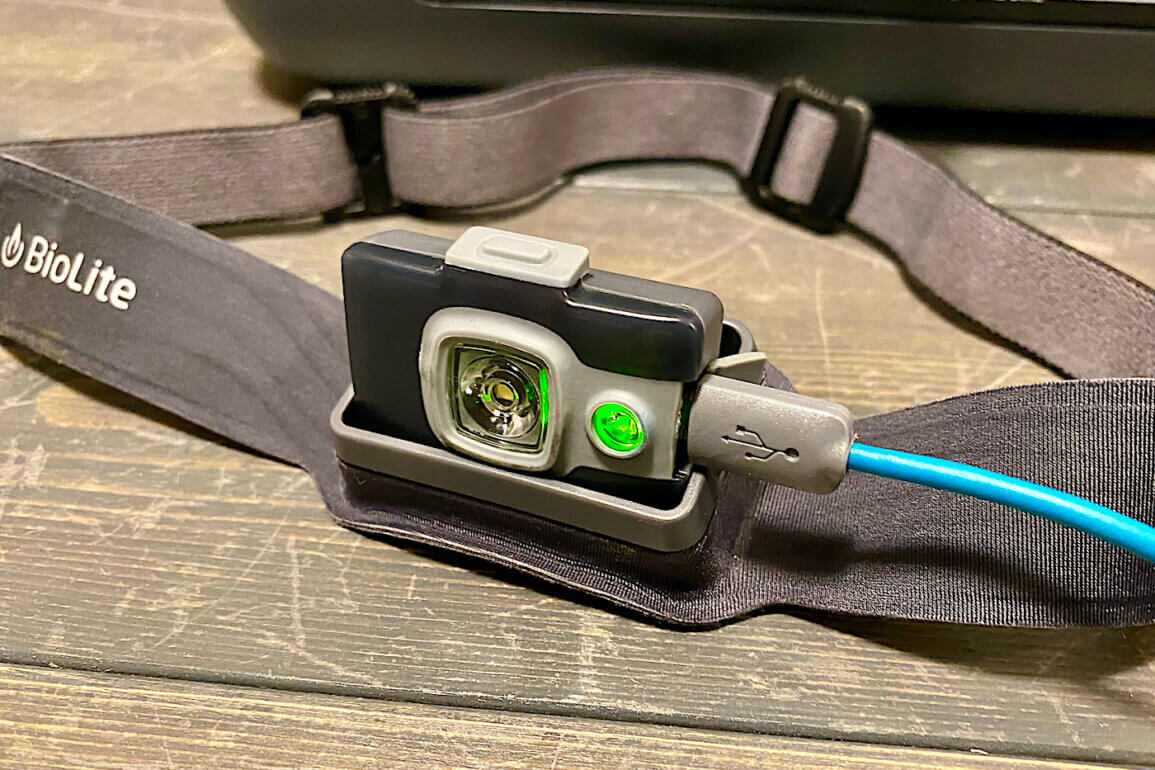The BioLite HeadLamp 325 is a great upgrade to the original BioLite HeadLamp 200. The key difference between the new 325 version and the first-generation 200 version is lumens: You now get more light — 325 lumens vs 200.
To get us a closer look, BioLite sent Man Makes Fire a review unit. After putting the BioLite HeadLamp 325 through its paces while camping, hunting, and gearing up or packing in the dark, this is what we learned:
BioLite HeadLamp 325 Review
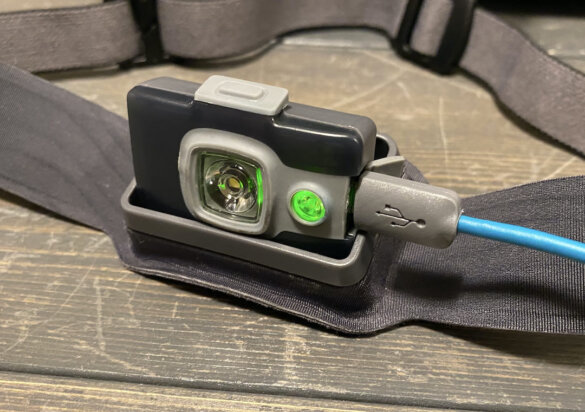
Everything we loved about the first BioLite HeadLamp 200 we still appreciate in the new HeadLamp 325 — the new 325 just has more power!
The most important differentiator between the BioLite HeadLamp 325 and other headlamp competition is comfort: The BioLite HeadLamp 325 is still the most comfortable headlamp we’ve ever worn.
BioLite achieves its astounding comfort levels by fusing a soft strap material to the headlamp housing. The result is a seamless, slightly curved feel against your forehead.
Even better, BioLite has created a very low-profile battery housing. Instead of a headlamp that sticks out from your forehead like an alien horn, the HeadLamp 325’s low-profile reduces the feel of the weight.
And how much does the HeadLamp 325 weigh? Just 1.75 oz. Most competing headlamps in this lumen class tend to weigh over 2 ounces.
High-Quality Light Output
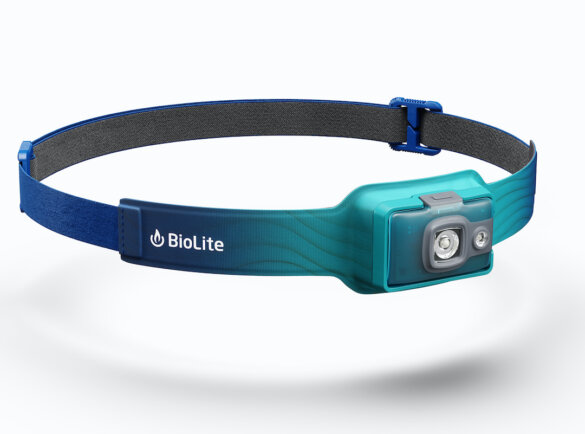
One of the things we appreciate most about BioLite is the company’s commitment to delivering high-quality, very usable light through a variety of lighting products, including its excellent AlpenGlow series of lanterns. Cheap headlamp competition might create headlamps with technically more lumen power, but they tend to skimp on quality optical components. This means that poorly made headlamps tend to produce shadows, holes, and odd bright spots in the beam patterns.
BioLite’s HeadLamp 325 produces a clean, crisp beam pattern. Many of the best competing headlamps give you two white light patterns — usually a spot or beam pattern for distance with a more diffuse flood option for close-up usage.
We consider to the HeadLamp 325 “spot” mode to function more like a hybrid combination between a beam and a flood light. BioLite has done an excellent job of creating a clean beam that pushes out to 70 meters but also is a pleasure to use up close.
You’ll appreciate the clean light when you’re working on gear in the dark, cooking at night, or navigating a trail in the woods.
Red Light Flood Mode
The HeadLamp 325 has a Red Flood mode, which gives you a short-distance red light to use when you want to save your night vision. Similarly, because many animals don’t see red light particularly well, if at all, hunters will often use red light modes when they’re moving in or out of areas in the dark. Because the HeadLamp 325 is so comfortable, lightweight, and produces super clean light, it’s in our guide to the best hunting headlamps.
Built-In Rechargeable Battery
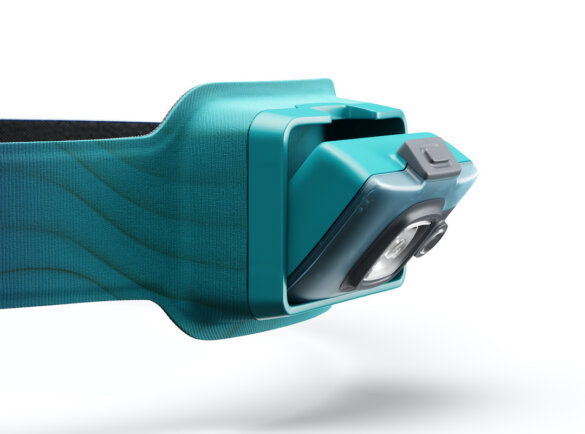
Most headlamps tend to produce what seems to be an inconsistent beam pattern that changes as battery levels drain. Some headlamps simply reduce the lumen output as the battery drains, extending the run time . . . but essentially delivering less lumens. This is great because your headlamp doesn’t suddenly extinguish while you’re navigating dangerous ground in the dark. The best headlamp manufacturers, BioLite included, work hard to deliver a more consistent, regulated output for a much bigger percentage of the battery life . . . then only reduce the output at a more controlled rate closer to the end of the rated runtimes.
When you use disposable alkaline batteries in competing headlamps, one drawback is ending up with partially drained batteries that don’t have enough power to last through your outing. What happens? You end up packing more batteries or ditching the partially drained batteries for fresh new ones. That’s more weight, more expense and more waste.
Because the BioLite HeadLamp 325 has a rechargeable battery, you can easily recharge it between uses, ensuring that you always have enough power to get you through.
What is the battery life? The 700 mAh rechargeable battery lasts up to 3 hours on high and up to 40 hours on low, which is consistent with our real-world usage.
Shop the BioLite HeadLamp 325 at Moosejaw and get FREE Shipping on orders over $49!
Durability
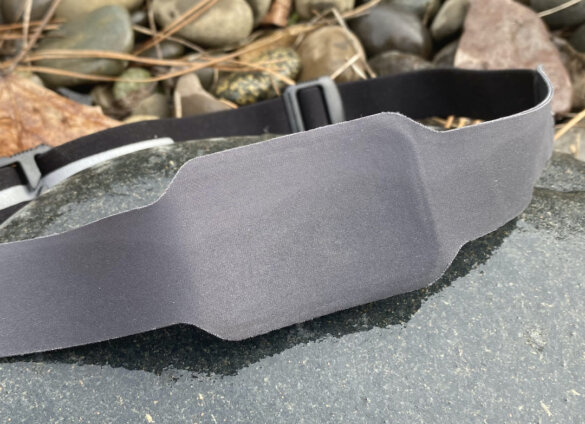
I have a BioLite HeadLamp 200 that I’ve been using off and on for three years. Because I test a lot of headlamps, I don’t take it everywhere, but it’s been my go-to headlamp for grilling on my back deck at night. For cooking, the clarity of light is excellent. As for longevity, it’s been rained on, recharged or topped off 50+ times, and it still holds a charge very well.
The one drawback to the HeadLamp 325 is that the rechargeable battery is completely built-in. You can’t replace it when it eventually fails. BioLite doesn’t report an expected duty cycle, but my HeadLamp 200 is still working surprisingly well after three years.
BioLite reports an IPX4 waterproofing rating, which makes the BioLite HeadLamp 325 not technically waterproof — just water-resistant. What does this mean? You’ll likely be able to survive some light rain — we have during testing — but if you plan to use it in consistently wet conditions, we would steer you toward a headlamp with a greater waterproof rating like the IPX7-rated Cosmo 350-R noted below in the competitive alternative section.
BioLite HeadLamp 325 vs 425 vs 800 PRO
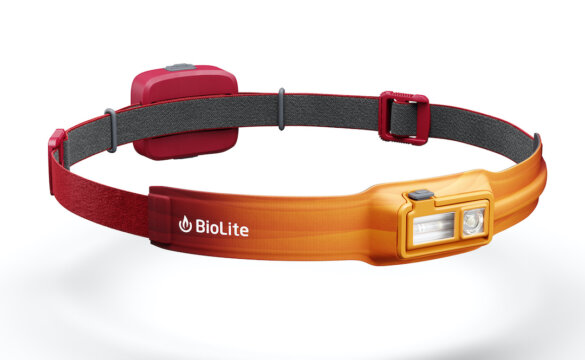
The key difference between the BioLite HeadLamp 325 and it’s larger siblings, the BioLite HeadLamp 425 and 800 Pro is where the rechargeable batteries are built into the headlamps. The 425 and 800 Pro feature larger, heavier rechargeable batteries and they’re positioned in the back of the headband.
This design lets BioLite deliver longer runtimes with more power output while retaining a comfortable, low-profile fit across your forehead. Despite their heavier weights, the 425 and 800 Pro remain comfortable to wear.
The drawback is that they’re not great headlamps to use while reading while laying on your back in a tent because the battery pack will be uncomfortable on the back of your head. If you read ebooks on your phone, however, this isn’t an issue at all.
One key benefit of the BioLite 425 and 800 Pro headlamps is the ability to connect to an external power bank to massively increase your runtime. BioLite calls this feature its Run Forever Mode. If you have a very technical hike, ride or climb, this feature is cool because it lets you run with full power without needing to recharge or swap in a new battery.
Competitive Alternatives & Options
If you’re considering the BioLite HeadLamp 325, you might also be interested in these alternative competing options:
Black Diamond Cosmo 350-R Headlamp — The Black Diamond Cosmo 350-R Headlamp delivers 350 lumens on high with a 5-hour runtime on high. How does the Cosmo 350-R gain 2 hours of runtime over the BioLite HeadLamp 325? More battery. The built-in rechargeable battery in the Cosmo is 1500 mAh compared to the 700 mAh HeadLamp 325 battery. The Cosmo’s drawback is extra weight. The Cosmo weighs 2.65 ounces compared to the HeadLamp 325’s 1.75 oz. Does it matter? For comfort, yes. The BioLite HeadLamp 325 is easily more comfortable.
Black Diamond Spot 400 — The Black Diamond Spot 400 is heavier and less comfortable than the BioLite HeadLamp 325. The key benefit to the Spot 400 is its versatility: It can use standard AAA batteries or Black Diamond’s BD 1500 Rechargeable Battery. We’re fans of the BD 1500 Rechargeable Battery, but it has one drawback — it requires a separate charger you have to keep track of.
Petzl Tikka Core Headlamp — The Petzl Tikka Core Headlamp is similar to the Black Diamond Spot 400 in that they can both use AAA or rechargeable battery packs from their respective brands. The Petzl Tikka Core Headlamp comes with a Petzl CORE rechargeable battery, which has a charging port built into it so you don’t need a separate charger to keep track of. The biggest drawback compared to the other competitive headlamps in this section is the increased weight — the Petzl Tikka Core Headlamp weighs in at 2.96 ounces.
The Bottom Line
All-in-all, the BioLite HeadLamp 325 brings a welcome lumen boost to make the HeadLamp 325 more powerful out on the trail than its 200-lumen predecessor. The low-profile, lightweight design delivers outstanding comfort and the beam quality is crisp and bright. Very highly recommended.
Get the Gear:
Check pricing & availability:
Amazon | Backcountry.com | Moosejaw | REI

